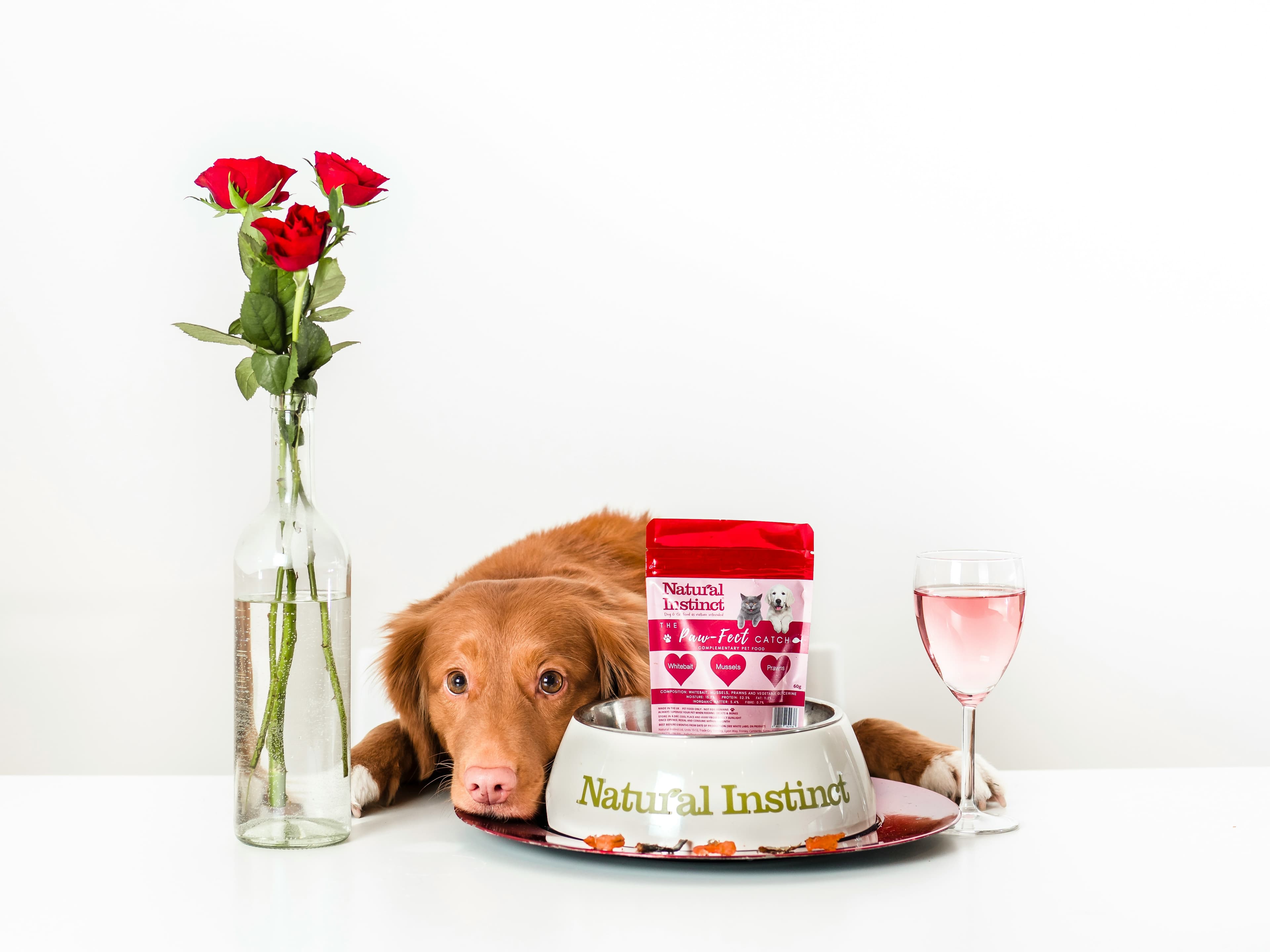Can You Give Your Dog Benadryl? Here's What You Need to Know

Introduction
As a pet owner, you might have found yourself in a situation where your furry friend is suffering from what seems like an allergic reaction. Maybe your dog is constantly scratching, has developed hives, or is sneezing non - stop. These are common signs of allergies in dogs, and they can be just as uncomfortable for our canine companions as they are for us humans.
The thought that might cross your mind in such a situation is, "Can I give my dog Benadryl?" Benadryl, or diphenhydramine, is a well - known over - the - counter anti - histamine in the human world. It's often used to relieve allergy symptoms like itching, sneezing, and runny noses in people. But when it comes to our dogs, the question of whether we can administer this medication is a bit more complex.
Allergies in dogs can be caused by a variety of factors. Just like humans, dogs can be allergic to pollen, dust mites, certain foods, or even insect bites. The symptoms can range from mild, such as a bit of itching and mild skin irritation, to severe, like difficulty breathing and swelling of the face or throat. When we see our dogs in discomfort, our natural instinct is to want to help them as quickly as possible. This is why understanding the ins and outs of giving Benadryl to dogs is so important. In the following sections, we'll explore the safety, proper dosage, and potential side effects of giving Benadryl to your dog.
What is Benadryl?
Benadryl is the brand name for diphenhydramine, which belongs to a class of drugs known as anti - histamines. In human medicine, it has been a staple in medicine cabinets for decades.
One of the most common uses of Benadryl in humans is for treating allergies. When our bodies are exposed to allergens such as pollen, dust, or certain foods, our immune systems overreact and release a chemical called histamine. Histamine is responsible for many of the unpleasant symptoms we experience during an allergic reaction, like itchy eyes, a runny nose, sneezing, and hives. Benadryl works by blocking the effects of histamine, thus reducing these symptoms.
For example, if you're allergic to pollen and start sneezing, coughing, and have a stuffy nose during the spring, taking Benadryl can often provide quick relief. It helps to calm down the body's overactive immune response, making you feel more comfortable.
Another common use is to relieve itching. Whether it's from a bug bite, a mild skin rash, or contact dermatitis, the anti - histamine properties of Benadryl can soothe the itchy sensation. This is because histamine is also a major contributor to the itching feeling. By counteracting histamine, Benadryl can break the itch - scratch cycle that can further irritate the skin.
It's also used to help with sleep in some cases. Since Benadryl has a sedative effect, it can make you drowsy. This side - effect has been harnessed to help people who have trouble falling asleep, although it's not a first - line treatment for insomnia. However, it's important to note that this sedative effect can also be a potential drawback, especially if you need to be alert, like when driving or operating machinery.
In addition, Benadryl has anti - nausea and anti - motion - sickness properties. It can be used to prevent or treat nausea and vomiting associated with motion sickness, such as when traveling by car, boat, or plane. This makes it a versatile over - the - counter medication for a variety of common health issues in humans.
Reasons for Giving Benadryl to Dogs
There are several common situations in which a veterinarian might recommend giving Benadryl to a dog:
- Allergic Reactions to Insect Bites or Stings: Dogs are often active outdoors and are prone to getting bitten or stung by insects such as bees, wasps, mosquitoes, or fleas. These bites can trigger an allergic reaction in some dogs. For example, a bee sting can cause local swelling, redness, and itching at the site of the sting. In more severe cases, a dog might have a systemic reaction, which could include hives all over the body, excessive licking or scratching, and even difficulty breathing. Benadryl can be used to counteract the histamine release caused by these bites, reducing the swelling and itching, and helping to prevent a more serious allergic response.
- Contact Allergies: Just like humans, dogs can have contact allergies to substances they come into contact with. This could be something as simple as a new type of shampoo, a fabric in their bed, or a chemical on the grass. If a dog has a contact allergy, they may develop a rash, redness, or itching on the skin where the contact occurred. For instance, if a dog is allergic to a certain ingredient in a new brand of dog shampoo, after a bath, you might notice that the dog starts scratching its skin vigorously, and there could be areas of red, irritated skin. Benadryl can help soothe these symptoms by blocking the histamine - related reactions in the skin.
- Seasonal Allergies: Many dogs suffer from seasonal allergies, much like people with hay fever. During the spring and fall, when pollen counts are high, dogs can be affected. Symptoms of seasonal allergies in dogs may include sneezing, itchy eyes, a runny nose, and excessive scratching. They may also rub their faces on the floor or furniture to relieve the itching. Benadryl can be used to manage these symptoms, making the dog more comfortable during allergy - prone seasons.
- Food Allergies: While Benadryl is not a long - term solution for food allergies, it can provide temporary relief of symptoms. Food allergies in dogs can cause skin problems, such as itching, redness, and hair loss, as well as digestive issues like vomiting and diarrhea. If a dog has an acute reaction to a food allergen, Benadryl can help reduce the histamine - induced skin symptoms until a more comprehensive dietary management plan can be implemented. However, it's important to note that identifying and eliminating the allergenic food from the dog's diet is crucial for long - term management.
Is it Safe to Give Benadryl to Dogs?
In general, giving Benadryl to dogs can be relatively safe, but it should always be done under the guidance of a veterinarian. Benadryl is often used to treat mild to moderate allergic reactions in dogs, and many dogs tolerate it well.
However, there are risks associated with giving Benadryl to dogs. Just like in humans, Benadryl can cause side effects in dogs. One of the most common side effects is drowsiness. Your usually energetic dog may become lethargic and sleep more than usual. For example, a normally active Labrador Retriever might spend most of the day napping after being given Benadryl. While this sedative effect can be beneficial in some cases, such as when a dog is extremely restless due to itching, it can also be a concern if the dog needs to be alert, like when going for a walk or being around other pets.
Another potential side effect is dry mouth. The anti - histamine properties of Benadryl can reduce saliva production, which can be uncomfortable for your dog. You may notice your dog licking its lips more frequently or showing signs of thirst. In some cases, dogs may also experience an upset stomach. This could lead to symptoms like vomiting or diarrhea. If your dog has a sensitive digestive system, these side effects may be more pronounced.
Moreover, not all dogs can tolerate Benadryl. Some dogs may have underlying health conditions that could interact negatively with the medication. For instance, dogs with heart problems, high blood pressure, or glaucoma should be given Benadryl with extreme caution. The drug can potentially affect the cardiovascular system and increase intra - ocular pressure, which could be dangerous for dogs with these pre - existing conditions. So, while Benadryl can be a helpful tool in managing a dog's allergic symptoms, it's crucial to approach its use with caution and always consult a veterinarian first.
Safe Dosage of Benadryl for Dog
Determining the correct dosage of Benadryl for your dog is crucial to ensure its safety and effectiveness. The general guideline for the safe dosage of Benadryl (diphenhydramine) in dogs is based on their weight. The typical recommended dose is 1 - 2 milligrams of Benadryl per pound of your dog's body weight, given every 8 - 12 hours. However, it's important to note that this is a general rule, and the exact dosage may vary depending on your dog's specific condition and overall health, so always consult your veterinarian before administering the drug.
Here's a simple formula to calculate the approximate dosage:
\( \text{Dosage (mg)} = \text{Dog's weight (lbs)} \times \text{Recommended dose per pound (mg)} \)
For example, if your dog weighs 30 pounds and the recommended dose is 1 mg per pound, the calculation would be:
\( 30 \text{ lbs} \times 1 \text{ mg} = 30 \text{ mg} \)
So, you would give your 30 - pound dog 30 mg of Benadryl.
If your dog weighs 50 pounds and you're using the higher end of the recommended dose (2 mg per pound), the calculation would be:
\( 50 \text{ lbs} \times 2 \text{ mg} = 100 \text{ mg} \)
Benadryl comes in different forms and strengths. The most common over - the - counter tablets are 25 mg and 50 mg. There are also liquid forms available, which can be more convenient for smaller dogs or those that have difficulty swallowing pills. If you need to give a fraction of a tablet, make sure to measure it as accurately as possible. For example, if your dog needs 12.5 mg (half of a 25 - mg tablet), you can carefully break the tablet in half. With liquid Benadryl, use a proper measuring device like a syringe or a dropper to ensure the correct amount is administered. Never guess the dosage or give more or less than what is recommended, as this can lead to ineffective treatment or potential overdose.
How to Administer Benadryl to Your Dog
Once you've determined the correct dosage of Benadryl for your dog, the next step is to actually give it to them. This can sometimes be a bit of a challenge, as not all dogs are eager to take pills or medicine.
If you're using Benadryl tablets, one of the easiest ways to administer them is to hide the pill in a small amount of your dog's favorite food. Many dogs are more than happy to gobble up a piece of cheese, a bit of peanut butter, or a small piece of cooked chicken that has the pill hidden inside. Make sure the food is soft enough so that the pill is easily concealed and the dog doesn't notice it. For example, you can smear a small amount of peanut butter on the pill and then roll it up, making it look like a little treat.
However, if your dog is a picky eater or is likely to spit out the food with the pill, you may need to get a bit more creative. You can try using a pill - pocket, which is a specially designed soft treat with a pocket to hold the pill. These are available at most pet stores and are often very effective in getting dogs to take their medicine.
If you're using liquid Benadryl, it's important to use a proper measuring device. A syringe or a dropper that comes with the liquid medication is ideal. First, draw up the correct amount of the liquid. Then, gently lift your dog's upper lip and place the tip of the syringe or dropper at the back of the side of their mouth, near the molars. Slowly squeeze the liquid into the dog's mouth, being careful not to squirt it too quickly, as this could cause your dog to choke. Talk to your dog in a calm, soothing voice while you're doing this to help keep them relaxed.
No matter which method you use, it's important to be patient. Some dogs may take a little coaxing to take their medicine. If your dog is resistant, don't force them too aggressively, as this can create a negative association with the medicine - taking process. Try taking a break and then trying again a few minutes later. And always make sure your dog has completely swallowed the medicine. If you're not sure, it's better to consult your veterinarian for advice on how to ensure proper administration.
Potential Side Effects
While Benadryl can be helpful in treating certain conditions in dogs, it's important to be aware of the potential side effects. Just like in humans, dogs can react differently to the medication.
The most common side effect of Benadryl in dogs is drowsiness. After taking Benadryl, your dog may become much more lethargic than usual. For example, a normally hyperactive Jack Russell Terrier might spend hours napping instead of running around the house or playing with toys. This sedative effect is due to the way Benadryl interacts with the dog's central nervous system. In some cases, the drowsiness can be beneficial, such as when a dog is extremely restless due to itching or anxiety. However, it's important to monitor your dog to ensure that they don't become overly sedated.
Dry mouth is another common side effect. Benadryl can reduce the production of saliva in a dog's mouth. You may notice your dog licking its lips more frequently or showing increased thirst. If you offer your dog water and they seem to drink more than normal, it could be a sign of dry mouth caused by the Benadryl. This can be uncomfortable for your dog, and in severe cases, it could potentially lead to dental problems if not addressed.
Gastrointestinal issues can also occur. Some dogs may experience an upset stomach, which can result in vomiting or diarrhea. If your dog has a sensitive digestive system, these side effects may be more pronounced. For instance, a small Chihuahua with a history of digestive problems may be more likely to vomit after taking Benadryl. If you notice any signs of gastrointestinal distress, such as repeated vomiting or diarrhea, it's important to contact your veterinarian.
In some rare cases, Benadryl can cause urinary problems. Dogs may have difficulty urinating, or in severe cases, they may experience urinary retention. This is a serious side effect that requires immediate veterinary attention. If you notice that your dog is straining to urinate, or if they haven't urinated for an extended period after taking Benadryl, it's crucial to get them to the vet as soon as possible.
Another potential side effect is an increase in heart rate. While not as common as drowsiness or dry mouth, some dogs may experience a faster heartbeat after taking Benadryl. This can be especially concerning for dogs with pre - existing heart conditions. If you notice that your dog's heart seems to be beating rapidly, or if they seem short of breath, contact your veterinarian right away.
It's also important to note that some dogs may have an allergic reaction to Benadryl itself. Symptoms of an allergic reaction to the medication can include hives, swelling of the face or throat, and difficulty breathing. If you suspect that your dog is having an allergic reaction to Benadryl, seek emergency veterinary care immediately.
When to Consult a Vet
While Benadryl can be a useful option for managing some of your dog's mild allergic symptoms, there are certain situations where it is absolutely crucial to consult a veterinarian.
If your dog is experiencing severe symptoms, such as difficulty breathing, swelling of the face, tongue, or throat, or if they have collapsed, do not attempt to give Benadryl on your own. These are signs of a severe allergic reaction, known as anaphylaxis, which is a medical emergency. Immediate veterinary care is needed, as this type of reaction can be life - threatening. For example, if your dog has been stung by a bee and within minutes starts to have trouble breathing and their face begins to swell significantly, call your vet or an emergency animal hospital right away.
Even if you have given Benadryl to your dog according to the recommended dosage, and the symptoms do not improve within a reasonable amount of time, it's time to consult a vet. Allergic reactions can sometimes be more complex than they seem initially, and your dog may require a different treatment approach. For instance, if your dog has been itching due to a suspected contact allergy, and after giving Benadryl for a couple of days, the itching is still persistent, a vet can conduct further tests to determine the root cause and provide more effective treatment.
Another important situation to consult a vet is if your dog develops new symptoms after taking Benadryl. This could be anything from increased lethargy, excessive drooling, or tremors. These new symptoms could be a sign of an adverse reaction to the Benadryl or an indication of an underlying health issue that was not initially apparent. For example, if your dog starts to have tremors a few hours after taking Benadryl, it could be a sign of an overdose or an unexpected reaction, and a vet needs to assess the situation.
Remember, veterinarians are trained professionals with in - depth knowledge of animal health. They can take into account your dog's overall health, medical history, and any other medications they may be taking to provide the best advice on whether Benadryl is appropriate and how to manage your dog's condition effectively. Don't hesitate to reach out to them when in doubt, as it's always better to be safe than sorry when it comes to your dog's health.
Alternatives to Benadryl for Dogs
If you're hesitant about giving your dog Benadryl or if your vet recommends exploring other options, there are several alternatives available for treating your dog's allergy - related symptoms.
Natural Soothers
- Chamomile: Chamomile has anti - inflammatory and calming properties. You can make a chamomile tea by steeping chamomile flowers in hot water. Once it has cooled down to room temperature, you can apply it to your dog's skin using a clean cloth to soothe mild itching. For example, if your dog has a small area of irritated skin due to a contact allergy, gently dabbing the chamomile tea on the affected area may provide some relief. However, it's important to note that chamomile tea should not be ingested by dogs in large amounts without veterinary advice, as it can cause stomach upset in some cases.
- Aloe Vera: Aloe vera is well - known for its soothing properties on the skin. The gel from the aloe vera plant can be applied directly to the skin to relieve itching and reduce inflammation. If your dog has a minor rash or has been scratching due to an allergic reaction, applying a small amount of pure aloe vera gel (make sure it's free from any additives like fragrance) can help. Just be cautious that your dog doesn't lick it off immediately, as ingesting large amounts of aloe vera can also cause digestive issues.
Veterinary - Recommended Medications
- Cetirizine: Cetirizine is another anti - histamine that is sometimes prescribed by veterinarians for dogs. It is often considered a good alternative to Benadryl, especially for dogs that may not tolerate Benadryl well. Cetirizine is known to have a lower sedative effect compared to Benadryl, which can be beneficial if you don't want your dog to become overly drowsy. It works in a similar way to Benadryl by blocking histamine receptors, thus reducing allergy symptoms such as itching, sneezing, and hives. The dosage of cetirizine for dogs is also based on their weight, and it's crucial to follow the vet's instructions precisely.
- Loratadine: Loratadine is a non - sedating anti - histamine that can be used to treat allergies in dogs. This can be a great option for active dogs or those that need to remain alert. Since it doesn't cause drowsiness, it won't affect your dog's normal activities. It helps to relieve symptoms like itching, runny nose, and sneezing. However, like all medications, it should only be given to your dog under the guidance of a veterinarian, who can determine the appropriate dosage based on your dog's age, weight, and overall health.
Specialized Diets
- Hypoallergenic Diets: If your dog has food allergies, switching to a hypoallergenic diet can be a long - term solution. These diets are formulated with novel protein sources that your dog is less likely to be allergic to, such as venison, duck, or fish, instead of the more common beef or chicken. They may also use hydrolyzed proteins, which are broken down into smaller pieces that are less likely to trigger an immune response. For example, if your dog has been itching and has had digestive problems due to a suspected food allergy, a vet may recommend a hypoallergenic diet. Over time, this can help reduce the frequency and severity of allergic reactions, eliminating the need for short - term medications like Benadryl in some cases.
- Omega - 3 Fatty Acid Supplements: Omega - 3 fatty acids, such as those found in fish oil supplements, can have anti - inflammatory effects on the body. They can help improve the skin's health and reduce itching associated with allergies. Many pet owners add fish oil supplements to their dog's food. However, it's important to consult a vet first, as too much fish oil can cause an imbalance in the dog's diet or interact with other medications they may be taking.
Conclusion
In conclusion, while Benadryl can be a helpful option for managing some allergic symptoms in dogs, it's not a decision to be taken lightly. Remember that the general dosage guideline is 1 - 2 milligrams per pound of body weight, given every 8 - 12 hours, but always confirm this with your vet. The potential side effects, ranging from drowsiness and dry mouth to more serious issues like urinary problems and allergic reactions to the drug itself, mean that close monitoring is essential.
The most crucial point is to always consult a veterinarian before giving your dog Benadryl. They can provide personalized advice based on your dog's specific health history, current medications, and the nature and severity of the symptoms. If your dog has an underlying health condition, such as heart problems, high blood pressure, or glaucoma, Benadryl may not be the best choice, or it may need to be administered with extreme caution.
If you're uncomfortable with giving Benadryl or if your dog doesn't respond well to it, there are alternatives available. Natural soothers like chamomile and aloe vera can be used for mild skin irritations, and there are other veterinary - recommended medications such as cetirizine and loratadine. Specialized diets, like hypoallergenic diets and omega - 3 fatty acid supplements, can also play a role in managing allergies in the long - term.
As a dog owner, your role in your pet's health is vital. When faced with a situation where your dog may be suffering from an allergic reaction, staying calm and making informed decisions is key. By being aware of the options, the proper usage of Benadryl, and when to seek professional help, you can ensure that your furry friend gets the best possible care and relief from their discomfort.




